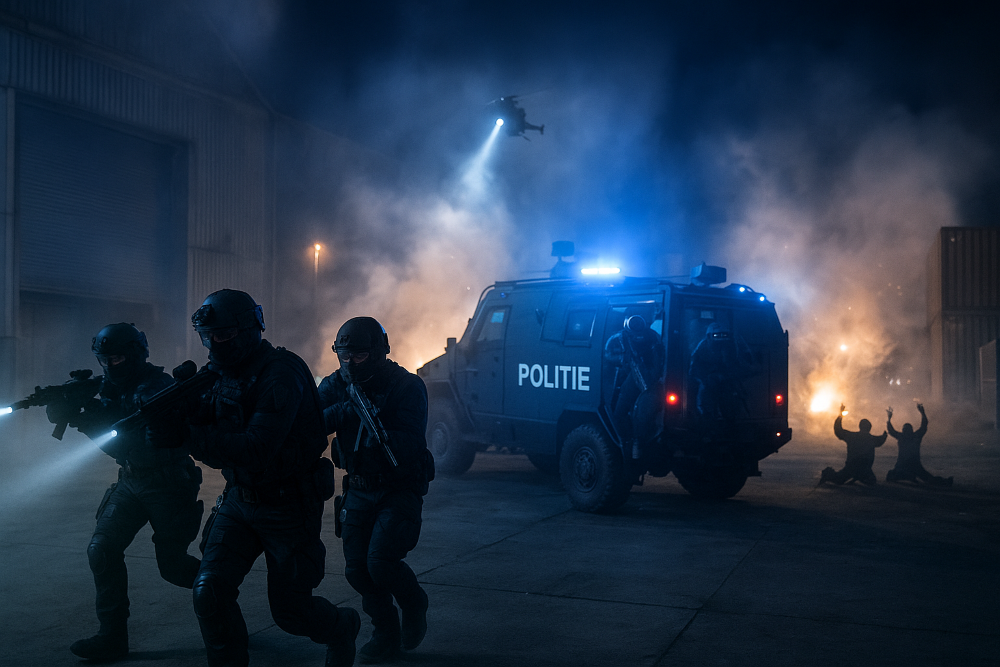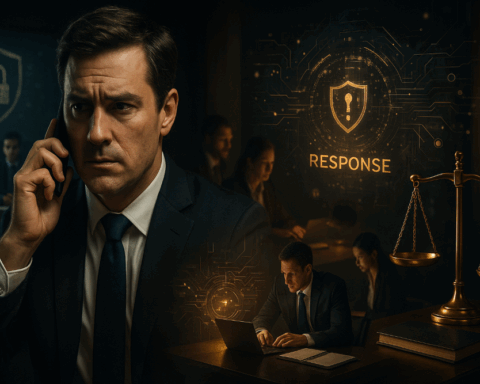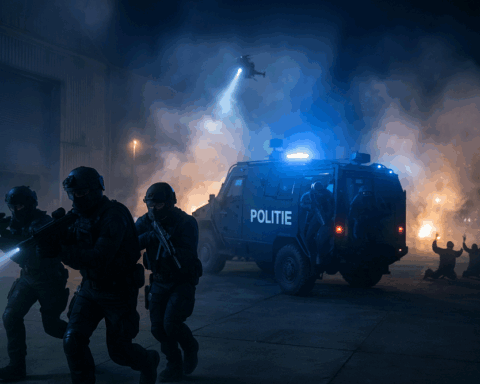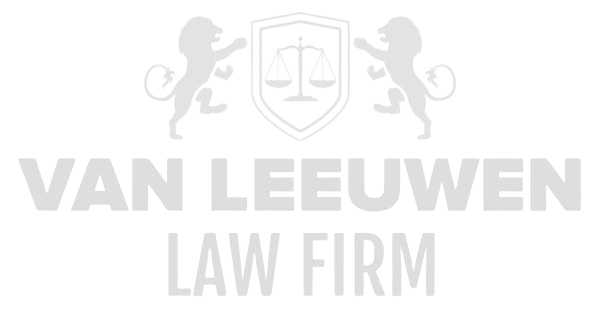The system for monitoring and protection forms the foundation of the national strategy for safeguarding public order and security in the Netherlands. In a society where threats manifest both physically and digitally, this system has become increasingly complex and sophisticated. The contemporary security environment is characterized by a combination of traditional crime, organized undermining activities, political tensions, and international threats, all of which can directly or indirectly affect societal stability. Within this context, it is essential that authorities’ powers and responsibilities are clearly delineated, that information exchange operates efficiently, and that interventions are carefully coordinated, while simultaneously safeguarding individuals’ fundamental rights. The challenge lies in balancing rapid operational effectiveness with legal justification, as measures against undermining networks or threats to public officials can have significant consequences for citizens and institutions.
The system functions as an integrated mechanism that connects decentralized and national responsibilities. Decentralized authorities, such as mayors and public prosecutors, form the first line of defense against threats with a direct impact on local communities, while the national domain, led by the Minister of Justice and Security and the Coordinator for Monitoring and Protection (CBB/NCTV), provides strategic oversight of objects, individuals, and infrastructure of national significance. Threats are analyzed, assessed, and translated into concrete measures that can be both preventive and reactive. The effectiveness of the system depends on careful threat assessment, adequate resource deployment, and continuous evaluation of the implemented measures. Within this framework, a client—whether an organization or an individual—subject to non-compliant conduct or allegations of undermining behavior may be directly affected by interventions carried out under this system. The legal and operational coherence among the various actors within the system strongly determines the proportionality and effectiveness of these measures.
Legal Basis and Structure
The system for monitoring and protection does not rely on a single law but is the result of a complex network of existing legal powers and arrangements. The Municipalities Act explicitly assigns responsibility to the mayor for maintaining public order and safety, making local authorities the primary actors when a threat arises at the municipal level. In parallel, the Law on the Organization of the Judiciary (Wet RO) regulates the powers of the public prosecutor in the criminal domain, creating a clear distinction between preventive and reactive interventions. The Police Act 2012 defines the duties of the police in carrying out monitoring and protection measures, acting as an executive body under both local and national authority. For intelligence-driven threat assessments and strategic coordination, the Intelligence and Security Services Act 2017 (Wiv) is crucial, as it establishes the role of the AIVD and MIVD in identifying and analyzing national threats.
The national domain is managed by the Minister of Justice and Security, who, through a mandate to the Coordinator for Monitoring and Protection (CBB/NCTV), coordinates the implementation of protection measures for individuals, objects, and services of national importance. Roles and responsibilities are further detailed in agreements, operational manuals, and policy documents that make the system operational. However, these documents are not fully publicly accessible, as disclosure could compromise national security. The system comprises both a decentralized domain, where the mayor and public prosecutor operate, and a national domain, where the minister and NCTV provide national direction and coordination. This dual structure creates a robust network capable of effectively addressing both local and national threats, while simultaneously providing a legal framework for the application of significant measures.
The interaction between these legal frameworks and operational execution makes the system highly complex. Every actor must operate within the limits of their authority, making consultation, information exchange, and coordination essential. A lack of clear lines or inadequate collaboration can lead to inefficiency or even legal conflicts, particularly when threats evolve rapidly or when undermining networks are active. Through an integrated approach, in which roles, responsibilities, and powers are precisely defined, the system can act both preventively and reactively. This is particularly important for clients who are victims of criminal undermining or accused of non-compliant conduct, as their rights and interests must be protected despite the necessity of effective protective measures.
Decentralized Domain
The decentralized domain constitutes the first link in protecting public order and safety and is primarily responsible for detecting and managing threats with local impact. The mayor leads the municipal “triangle” along with the police chief and the public prosecutor, ensuring the coordination of all preventive and reactive measures within the municipality. Threat information is gathered by the local police and further analyzed through the Regional Information and Expertise Center (RIEC), with a focus on organized crime and undermining activities. Through these information cycles, the mayor can respond appropriately to threats against individuals, such as local officials, as well as to objects and events that pose a risk to the community.
Within the decentralized domain, a reactive stance is complemented by a strong preventive approach. Protective measures are aligned with threat assessments and may range from routine patrols and camera surveillance to temporary closures during events. The mayor has authority under the Municipal Ordinance (APV) to designate specific areas for measures or implement camera monitoring. The police serve as the executing body, while the mayor oversees the proportionality and effectiveness of the measures taken. This preventive approach is essential for early detection and intervention against undermining activities, such as criminal networks or threats against public officials.
Coordination and collaboration are central to the decentralized domain. The mayor works closely with the public prosecutor and police chief, ensuring continuous alignment of threat analyses and operational measures. Local threat information can also be shared with the national domain to ensure coordinated responses to more significant threats. For clients affected by non-compliant actions or allegations of undermining activities, the decentralized domain is often the first point of contact, where local measures and interventions directly impact daily life. The extent to which the mayor and public prosecutor collaborate effectively largely determines the speed, proportionality, and legal scrutiny of the measures implemented.
National Domain
The national domain focuses on objects, individuals, and services of national importance, where an incident or threat may have immediate consequences for national security. This includes members of the Royal Family, the Prime Minister, embassies, vital infrastructure, and other essential institutions. The Minister of Justice and Security acts as the competent authority, granting the CBB/NCTV a mandate to coordinate and implement protection measures. The national domain is distinguished by the structural nature of its security, the necessity of strict confidentiality, and the complex interaction between national services, the police, and private security providers.
Threats within the national domain are based on comprehensive analyses conducted by the AIVD and NCTV, which establish threat levels and risk profiles. Protective measures are taken according to principles of proportionality and subsidiarity. These measures include not only physical protection, such as access control, object monitoring, and personal security, but also confidential measures aimed at information security, sabotage detection, and prevention of criminal interference. For clients operating in a national context, such as civil servants or public figures, security measures can be both visible and discreet depending on the level of threat.
Evaluation and periodic recalibration are crucial in the national domain. The system is dynamic and must constantly adapt to new threats, technological developments, and changing geopolitical circumstances. The CBB/NCTV monitors the execution of measures, conducts audits, and reports to the minister and parliament. For clients directly or indirectly affected by national security measures, understanding the legal basis and proportionality of actions is essential to protect rights and address any unauthorized intrusions on freedom or privacy.
Role of the Mayor
The mayor plays a central role within the decentralized domain and is primarily responsible for maintaining public order and safety within the municipality. Under the Municipalities Act (Articles 172–174), the mayor has the authority to implement protective measures for objects and events that pose a risk to the community. This includes both preventive measures, such as camera monitoring or area designations, and emergency measures during crises. In cases of criminal threats, however, the mayor’s powers are limited, with authority passing to the public prosecutor, clearly distinguishing preventive local authority from reactive criminal law enforcement.
Leading the local police within the municipal triangle is a core aspect of the mayor’s role. This requires continuous coordination with the public prosecutor and the police chief to ensure that threat information is correctly interpreted and measures are appropriately implemented. The mayor can also deploy crisis structures such as the Incident Command (COH) or the Regional Operational Team (ROT) during serious threats. This allows for rapid action in complex situations, minimizing the impact on citizens and institutions while maximizing the effectiveness of interventions.
The mayor also carries a communication responsibility toward citizens, institutions, and the media. Informing the community about threats and the measures taken is crucial to limiting public unrest and ensuring compliance with safety measures. In cases of severe threat, the mayor may request additional support from the NCTV, linking national expertise to local authority. For clients affected by undermining activities or non-compliant conduct, the mayor initially determines the extent and nature of local measures, directly influencing their environment and safety.
Role of the Public Prosecutor (HOvJ)
The public prosecutor occupies a central position within the system for guarding and securing when threats have a criminal character or when organized criminal undermining directly impacts public order. Under Article 148 of the Judicial Organization Act (Wet RO), the public prosecutor has the authority to make decisions regarding security measures arising from concrete threats against individuals, objects, or organizations. This authority extends to coordinating operational police measures, initiating criminal investigations, and ensuring that interventions comply with principles of proportionality and subsidiarity. In cases where clients are affected by non-compliant behavior or accusations of undermining, the public prosecutor is often the first authority to apply legal frameworks to practical interventions.
The role of the public prosecutor requires a careful balance between repressive enforcement and protection of individual rights. When threat analyses from the police or intelligence and security services indicate a concrete risk, the public prosecutor determines which measures are necessary and proportionate. Advice is regularly sought from the NCTV or other specialized services, especially for more severe measures that may significantly affect citizens or organizations. These measures can range from personal protection and access restrictions to initiating criminal investigations, which may run parallel to preventive security measures.
Additionally, the public prosecutor serves as a link between local and national authority by ensuring coordination with the mayor and police chief within the municipal triangle. This coordination is crucial to prevent duplication of measures or overlapping of powers, which could lead to legal complications. The public prosecutor informs involved parties of the measures taken to the extent possible without undermining security effectiveness. In situations involving undermining or threats against authorities, clients may be closely monitored both operationally and legally, with a strong emphasis on compliance with legal protections and proportionality.
Role of the NCTV and Coordinator for Guarding and Securing (CBB)
The National Coordinator for Counterterrorism and Security (NCTV) and the Coordinator for Guarding and Securing (CBB) play a central role in the national coordination of the system for guarding and securing. The NCTV functions as the executive body of the Minister of Justice and Security and supervises the integrated alignment of security measures at the national level. The CBB operates as the minister’s representative, overseeing the practical implementation and coordination of these measures, with particular attention to objects, individuals, and services of national importance. Within the NCTV/CBB domain, information from the AIVD, MIVD, and police is collected, analyzed, and translated into risk profiles that form the basis for policy and operational decisions.
The NCTV/CBB monitors the proportionality, effectiveness, and consistency of measures implemented locally and nationally. This includes developing threat analyses, risk profiles, and scenarios that anticipate possible undermining activities or attacks against authorities. The body advises local and national authorities on the degree and nature of measures, ensuring compliance with legal frameworks while maintaining operational effectiveness. In situations where clients face interventions, the NCTV/CBB often serves as the entity overseeing coordination between parties and safeguarding the proportionality of measures.
Furthermore, the NCTV/CBB conducts periodic evaluations and audits to assess whether measures are effective and need adjustment in response to changing threats. The results of these evaluations are reported to the Minister of Justice and Security and the Dutch Parliament, ensuring political oversight and societal accountability. Through this central coordination, the system can respond quickly and purposefully to both local and national threats, detecting and addressing undermining networks and non-compliant conduct of individuals or organizations at an early stage.
Threat and Risk Analysis
Threat and risk analysis forms the foundation of the system for guarding and securing. All measures are based on precise and continuous threat assessments, integrating both local and national information sources. The police conduct local threat analyses, while intelligence and security services such as the AIVD and MIVD provide input regarding organized crime, terrorist networks, and foreign threats. The NCTV translates this information into concrete threat levels, ranging from low to critical, which guide the scope and intensity of measures to be taken.
Threat analyses are always focused on specific individuals or objects and form the legal and operational basis for interventions. The analysis assesses the likelihood of an incident, potential impact, and necessary measures to mitigate risks. For clients subject to such analyses, this may mean that their activities, locations, or networks are closely monitored and that measures are imposed temporarily limiting freedom of movement, without automatically triggering a criminal procedure.
Analyses are periodically reviewed and updated to ensure that measures continue to align with current threats. Confidentiality and secrecy are essential, as unauthorized disclosure could undermine the effectiveness of security measures. For clients, this means that they may not have full access to the analysis concerning their situation, but legal protections are available to contest disproportionate interventions through formal procedures for objection and appeal.
Measures (Guarding and Securing)
Measures within the system are diverse and tailored to the nature of the threat, the context of the incident, and the characteristics of the individual involved. Object protection may involve establishing permanent posts at sensitive buildings, while personal protection can include police or private security personnel. Camera surveillance and physical barriers, such as fences or concrete blocks, are used to prevent unauthorized access and serve as a visible signal of heightened vigilance.
Access controls and detection gates are often integrated into the physical infrastructure of objects of national or municipal importance. Temporary measures, such as event cordons or emergency powers exercised by the mayor, can be deployed quickly to mitigate immediate threats. Police and the Royal Netherlands Marechaussee (KMAR) implement these measures, while confidentiality and discretion are maintained to ensure the effectiveness of interventions. For clients, this may directly affect access to locations, freedom of movement, and personal safety, especially when measures run parallel to criminal investigations.
The intensity and nature of measures are continually adjusted to reflect current threats, with proportionality and subsidiarity as guiding principles. This means that measures must always be commensurate with the risk, and lighter interventions are considered before more intrusive actions are applied. This approach is essential to balance the protection of society with respect for the individual rights of those affected, who may sometimes be victims of non-compliant conduct or undermining activities.
Legal Protection and Fundamental Rights
Within the system of monitoring and security, safeguarding the legal position of those involved is a critical aspect. Measures such as object protection, personal security, and access restrictions directly affect fundamental rights, including privacy (Article 10 of the Constitution and Article 8 of the European Convention on Human Rights) and freedom of movement. The system therefore requires a continuous balancing act between the necessity of security measures and the protection of individual rights. Decisions arising from threat analyses are formally issued as administrative law decisions under the General Administrative Law Act (Awb), such as area bans or camera surveillance, and must be properly justified, even when confidential information partially determines the content of the decision.
Ensuring proportionality and subsidiarity is central to the implementation of these measures. This means that interventions do not exceed what is strictly necessary to mitigate the threat, and that lighter alternatives are always considered. For affected individuals, this can mean temporary restrictions on freedom of movement or exposure to discreet security interventions. Legal review of such measures occurs through objection and appeal procedures, although access to the underlying threat information is often limited due to national security or operational concerns. This creates a complex legal landscape in which the rights of those involved must be carefully weighed against the need for effective protection of public order.
Judicial review in this domain is generally cautious, especially when measures are based on secret or sensitive information. Nevertheless, the system provides mechanisms for legal correction and oversight, allowing unlawful or disproportionate measures to be remedied. Mayors and public prosecutors are required to justify their decisions and make transparent the balance between public order, security, and individual rights. For clients confronted with such measures, this means that formal avenues exist to seek legal protection, although the practical implementation of security measures often takes precedence due to the urgent nature of threats.
Threats Against Authority Figures (Mayor, Police Chief, etc.)
Threats against local authority figures represent an increasing security risk, particularly in areas where undermining networks are active or societal tensions are high. In such cases, the procedure begins with the public prosecutor in the district of the individual concerned, with the police conducting a detailed threat assessment. This assessment focuses on the nature and severity of the threat, the potential perpetrators and their means, and the impact on public order. The HOvJ then decides on the necessity and scope of measures, obtaining advice from the NCTV regarding proportionality and effectiveness.
Measures for authority figures range from personal protection and physical shielding to operational coordination with national services and discreetly applied interventions. The CBB/NCTV can act coordinatively when threats are complex or have a national dimension. Unlike objects or individuals within the national domain, local authority figures are not automatically placed in this domain, making coordination between local and national authorities essential. For clients working or living within the area of such authority figures, this may mean that security measures indirectly affect their freedom of movement or operational activities, especially when measures run parallel to investigations into undermining networks.
Collaboration between local and national authorities is crucial to ensure the effectiveness of measures. This includes continuous coordination regarding threat analyses, operational planning, and evaluation of measures taken. In cases of undermining or non-compliant behavior, such threats can have direct consequences for those involved, both legally and practically. However, the system provides mechanisms to safeguard the proportionality and legality of measures, seeking a balance between protecting authority figures, maintaining public order, and upholding the rights of citizens and organizations affected by the measures.









